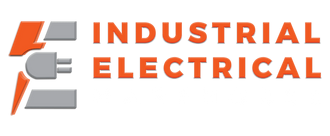In industrial plumbing systems, even a minor leak can lead to costly downtime, safety hazards, and reduced system efficiency. One of the most effective ways to avoid these issues is by ensuring proper pipe fitting installation and maintenance. Whether you're handling gas lines, water systems, or chemical transport, mastering the basics of pipe fitting leak prevention can significantly enhance long-term reliability.
This guide offers actionable field tips and best practices—including proper torque application, the correct use of sealants, and effective thread tape techniques—to help you prevent leaks and maximize the lifespan of your industrial piping systems.
Why Pipe Fitting Leak Prevention Matters
Pipe fitting leak prevention is crucial not only for operational efficiency but also for safety, regulatory compliance, and overall cost-effectiveness. Leaks can erode the integrity of a system, cause environmental damage, and pose serious health and safety risks in industrial environments.
Using high-quality pipe fittings is essential, but even the best components can fail if installed improperly. This is why it's vital to combine quality materials with expert installation practices.
Common Causes of Pipe Fitting Leaks
Understanding the common reasons behind leaks is the first step to preventing them:
- Improper Torque: Over-tightening or under-tightening fittings can crack threads or create loose connections.
- Incorrect Sealants: Using the wrong type of sealant or applying it incorrectly can leave gaps in the seal.
- Thread Damage: Cross-threading or damaged threads reduce the effectiveness of the seal.
- Thermal Expansion and Contraction: Changes in temperature can loosen fittings over time.
- Vibration and Mechanical Stress: Machinery vibrations can cause fittings to shift or loosen.
- Corrosion: Chemical reactions with pipe materials can weaken joints.
Best Practices for Leak-Free Pipe Fitting Installations
1. Use Proper Torque Settings
When tightening pipe fittings, always follow manufacturer-recommended torque settings. Using a calibrated torque wrench ensures that fittings are not over- or under-tightened.
- Over-tightening can deform the threads, causing leaks.
- Under-tightening fails to compress the seal fully.
Field Tip: Use anti-seize lubricants if recommended to ensure accurate torque application without damaging the threads.
2. Apply Thread Sealants Correctly
There are three main types of thread sealants:
- PTFE Thread Tape: Ideal for water and air lines. Wrap it clockwise 2–3 times around the threads.
- Pipe Dope (Liquid Sealants): Suitable for gas and high-pressure systems. Apply evenly around male threads.
- Anaerobic Sealants: Best for metal fittings; they cure in the absence of air.
Field Tip: Do not mix sealants (e.g., pipe dope + tape) unless verified by the manufacturer. Mixing can cause chemical incompatibility.
3. Inspect Threads Before Installation
Before assembly, visually inspect threads for:
- Burrs or metal shavings
- Cross-threading signs
- Rust or corrosion
Clean threads with a wire brush and apply sealants only after confirming thread integrity.
4. Account for Pipe Material Compatibility
Not all fittings are compatible with all pipe materials. For instance:
- Brass fittings on galvanized pipes can cause galvanic corrosion.
- Use stainless steel for corrosive environments.
Field Tip: Check for certification (ANSI, ISO) to ensure compatibility.
5. Secure Against Vibration
Industrial systems often experience vibrations from pumps, compressors, or external traffic. Use vibration isolators and proper bracketing to secure your pipe fitting installations.
Field Tip: Inspect connections regularly for signs of movement or wear.
6. Monitor Temperature and Pressure Ratings
Always choose fittings that are rated for the maximum operating temperature and pressure of your system. Exceeding these ratings can compromise the integrity of seals and cause leaks.
Field Tip: When in doubt, choose fittings with a safety factor of 1.5 to 2 times the expected load.
7. Perform Leak Tests Post-Installation
Pressure test the system after fitting installation. For gas lines, use a soap solution to check for bubbles. For liquid systems, monitor pressure drops over time.
Field Tip: Document test results for compliance and future reference.
Maintenance Tips for Long-Term Leak Prevention
Even the best pipe fitting installations can develop issues over time. Regular inspection and maintenance extend system life and prevent failures.
- Visual Inspections: Monthly or quarterly walkthroughs to check for signs of wear, leaks, or corrosion.
- Retorque Fittings: Especially in high-vibration environments.
- Sealant Reapplication: Periodic replacement if the system is disassembled.
- System Audits: Annual audits to assess overall performance and reliability.
When to Replace Pipe Fittings
If you encounter any of the following, replacement is better than repair:
- Threads are visibly damaged
- Fitting material is corroded or cracked
- Sealing surfaces are worn or compromised
- Repeated leakages after multiple sealing attempts
Field Tip: Always have spare fittings available on-site to avoid delays.
Conclusion: A Leak-Free System Starts with the Right Approach
Preventing pipe fitting leaks isn’t about one magic product—it’s about combining the right fittings with expert techniques and routine care. By following the best practices outlined here—applying correct torque, using suitable sealants, inspecting threads, and conducting regular maintenance—you’re setting up your industrial plumbing system for long-term, leak-free performance.
Explore high-quality pipe fittings and plumbing accessories at Industrial Electrical Warehouse. Our collection includes durable, industry-rated fittings designed for various applications—from chemical to water systems—ensuring you get performance that lasts.
Related Collections to Explore:
Start building a more reliable system today—leak prevention begins with the right knowledge and the right tools.


